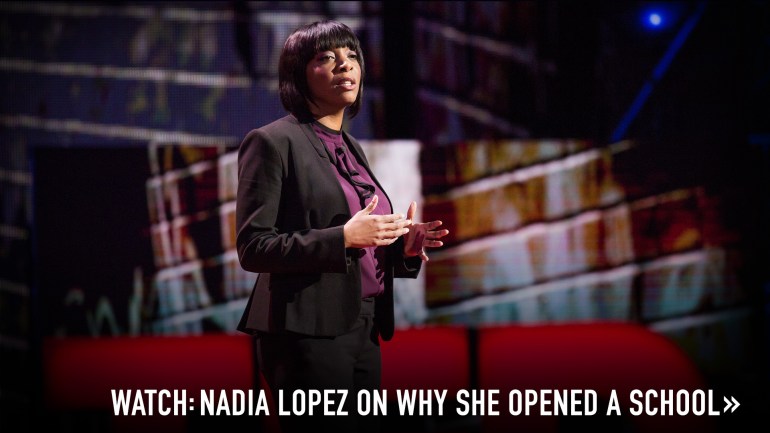
Smart ways to handle your next heated situation, shared by Nadia Lopez. She should know — she’s a school principal.
Nadia Lopez, founding principal of Mott Hall Bridges Academy, is no stranger to a challenge. When she opened the school in Brownsville, Brooklyn — one of the most underserved and violent neighborhoods in New York City — she did it with knowledge that it would be no easy task. “In challenging spaces, the greatest challenge is that we don’t know what’s causing the challenge — you can’t see it correctly, so you can’t ask the right questions,” says Lopez. Armed with a quiver of experience from her corporate and education backgrounds (she previously worked at Verizon and as a teacher in Fort Greene, Brooklyn), Lopez has faced innumerable obstacles with perseverance, grace and immutable passion. Here she shares some of her favorite ways to dial down conflict — applicable in situations far beyond the classroom.
1. Be vulnerable.
When faced with demanding circumstances, how do you restore morale and re-inspire others to see your vision? Though it may seem counterintuitive, being open and honest with your team during challenging times demonstrates a sense of trust that can develop into mutual respect. “Start with being very clear and transparent,” shares Lopez. “I actually speak quite frankly to my team, as well as my scholars.” Sharing where you are struggling fosters an ecosystem of understanding and support, and does far more good than pretending that you are The Fearless, Flawless Leader.
2. Be aware.
Stop and ask, “Why isn’t this working?” At Mott Hall Bridges Academy, Lopez prioritizes time for face-to-face conversation. “I do check-ins,” she explains. “I create focus groups sometimes where I’ll gather with a group of teachers and ask them what’s going on and what can we do to boost morale of the team, and I do the same for the kids. I’ll ask them ‘how does this feel?’ Then I hold myself accountable for how we need to make whatever proper considerations in the building to move forward.”
3. Center yourself.
A principal deals with challenges from all sides, from scholars, employees and administrators. So when things escalate — and they often do — Lopez has various tools and techniques she uses to help her to approach the situation with a level head. First, she tries to center herself so she can be a calm and rational mediator. (Being calm is so important that she tries to spend at least 15 minutes each day enjoying uninterrupted silence. “I’m a human being and I can be reactionary,” she acknowledges, so taking this moment before conflict even comes up is crucial for an even-keeled response.) She’s also sure to run situations past friends or family members. “Their guidance tends to have your best intentions at heart,” she says. Plus, loved ones don’t mind pointing out where you can improve. Finally, she finds that writing things down can help to put things into perspective and help her answer whether something is worth a fight — or if it’s just time to move on.
4. Manage mediation.
When playing the role of conciliator, Lopez lays out what she expects from those in the disagreement (much like kindergarten rules: no yelling, wait to speak your turn, respect a person’s turn to explain their side), to create a safe space for honest communication. “You have to set up protocols and rules of engagement,” says Lopez. “If we’re here, it’s because we were adult enough and mature enough to say that we want to be responsible in solving the issue.”
5. Listen deeply and actively.
In tense discussions, it’s important to acknowledge the feelings of each party involved and use reflective language to show that they’ve been heard. Oftentimes, long-felt, harbored emotions originating from other sources can ignite miscommunications and set off a firestorm between two people. “There’s a lot of ‘he-said, she-said,’ and people getting caught up in their feelings,” shares Lopez of the emotional interactions she witnesses between her students, parents, even teachers. Her job is not to get embroiled. “You need to be compassionate and empathetic,” she says.
6. Acknowledge, respect and thank. Repeat.
It doesn’t take thousands of dollars to make others feel appreciated. A simple email, text or brief handwritten (ideally, hand-delivered) note has the power to touch deeply and stave away challenging occurrences. In one recent instance, Lopez asked herself to be honest about whether her staff were feeling appreciated. Did they feel like she was there for them, no matter what? So, she wrote them a quick note. “It really just said ‘Thank you. Thank you for being present,’” remembers Lopez. Recognizing a person’s dedication and skills pre-emptively calms potentially troubled waters.


















